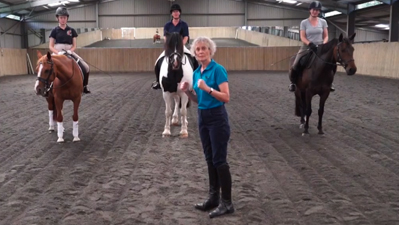Tempo Control Leads To Impulsion
August 5, 2016THREE THINGS JUDGES LOOK FOR AT INTRO
August 5, 2016Please share this article on with your friends using the buttons above.
Pre-ordering on Amazon is simple, and Amazon only charges your card when the book is released.
Judges can tell you a lot, in the little space they have, about the how well you are doing in training your horse and performing your test. But there are a number of things they generally don’t tell you. In this post I will give you two examples.
- RTFM – This is something from the IT industry and means Read The [insert rude word] Manual. The big dressage bodies have manuals/rulebooks and they are generally freely available. The rulebooks contain some very helpful information that MOST people do not read or don’t realise are available. Have a look at the links below and spend some time reading through the recommended sections, you can learn a lot. Rarely will a judge tell you to read the Rule Book, but it is something everyone should do. Not only will you learn the rules, you will also learn the requirements of the different movements and what is required in each of the paces.
http://www.britishdressage.co.uk/rules – check the section in the handbook on definations
https://www.fei.org/fei/regulations/dressage – the chapter at the start on Dressage is VERY useful and covers movements, paces and requirements. - “Needs more suppleness” – This could mean a number of things and sometimes the judge doesn’t differenciate because our goal is not to ‘instruct’ people how to fix problems but to point out issues we see. It may mean that as a rider you are not presenting your horse correctly, so that it seems the horse is lacking suppleness. In the back of the judges head, they will be thinking “This rider isnt preparing for the turns, circles”, “This rider doesnt seem to be very accurrate” or “This rider doesn’t understand how to perform serpentines correctly”
In my book ‘Master Dressage‘ I talk about what judges are looking for, how to perform different movements, how to present your horse in its best light, how to improve accuracy, suppleness and I talk about the scales of training. These are a few of some of the topics tackled in book. I also list a number of typical judges comments and provide interpretations for them.

